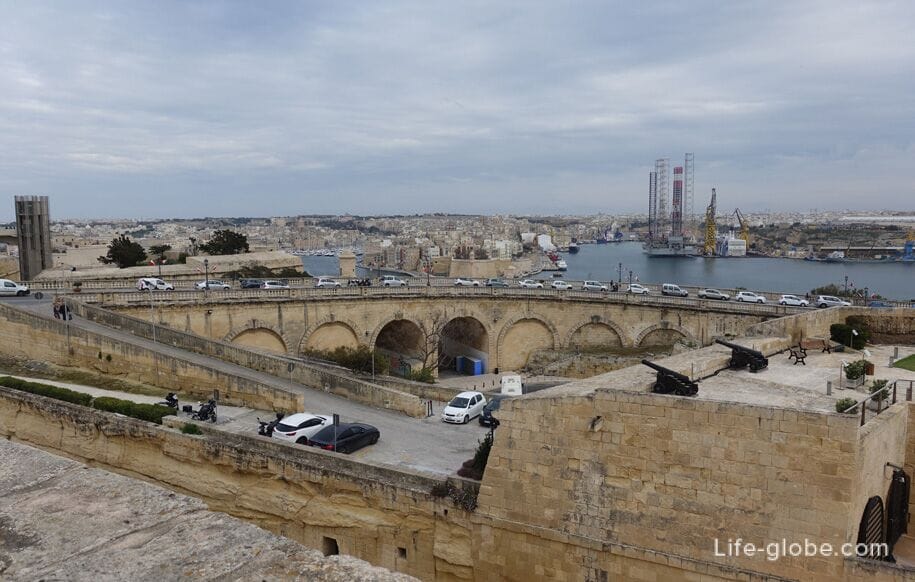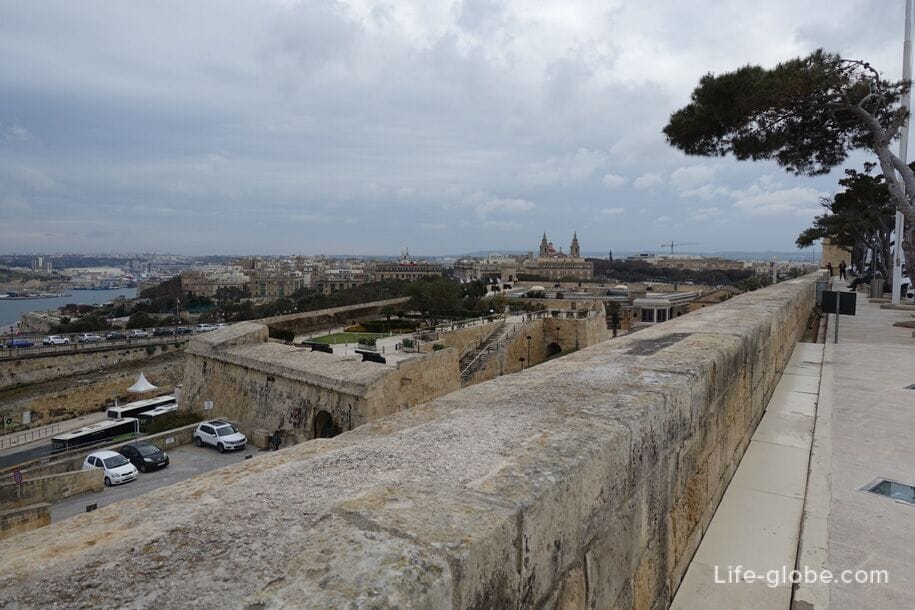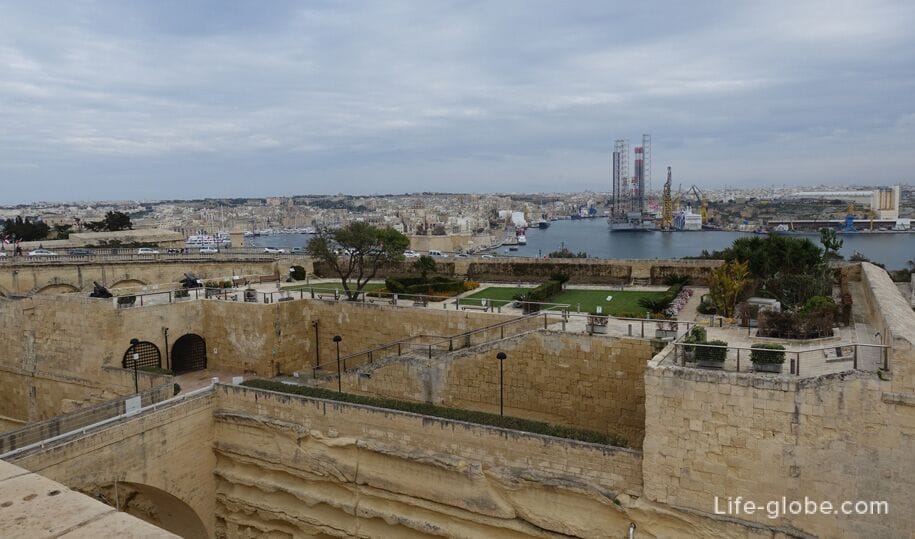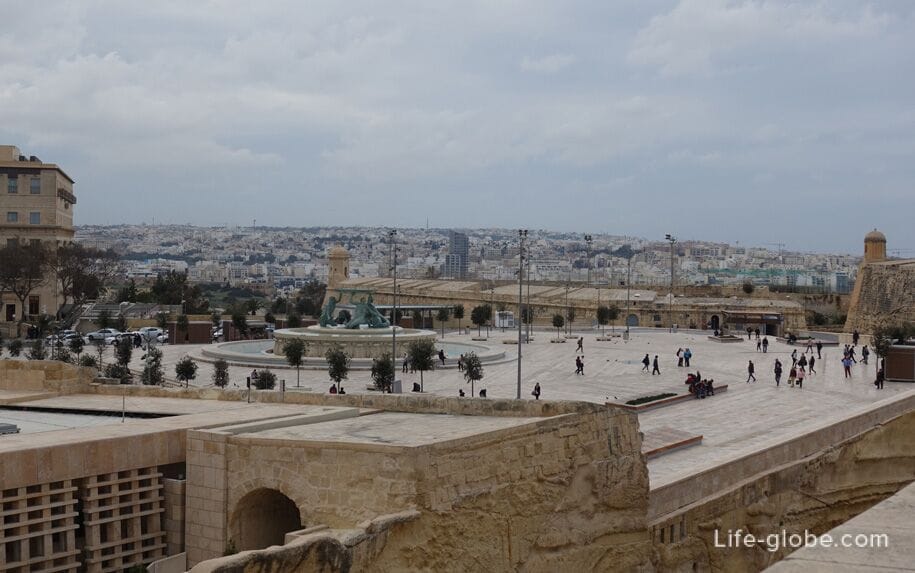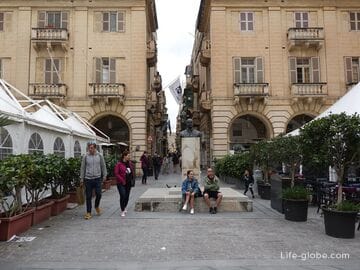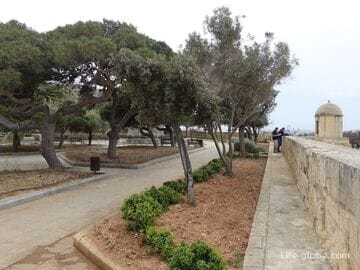The Castille Square - one of the Central and the largest squares of the capital of Malta, Valletta.
The square is located on the hill, the Bastion of Saint James (St. James), close to the City gate of Valletta and Upper Barrakka Gardens.
The Castille Square has an irregular shape along its perimeter are located one of the important buildings in Valletta, which are the sights of the city. The center of The square is decorated with a small fountain, as well as monuments and sculptures.
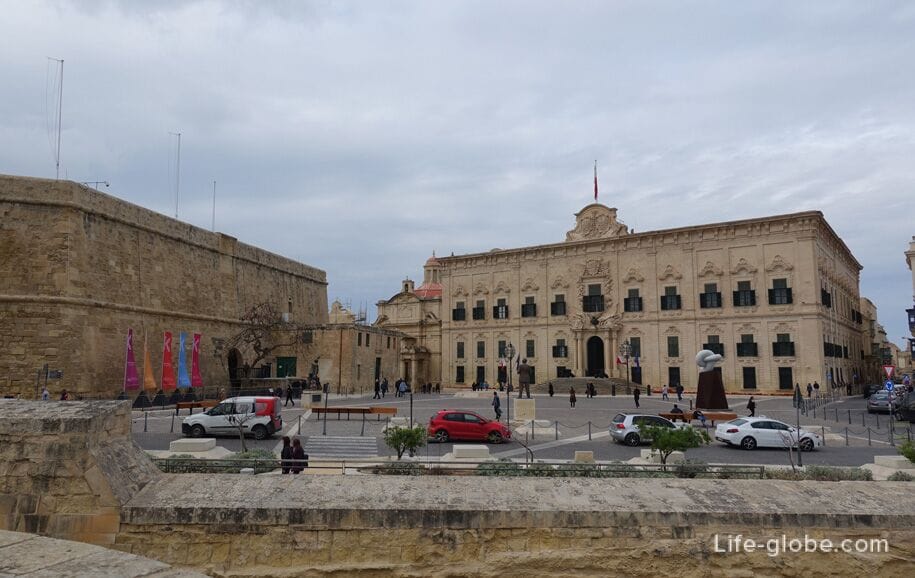
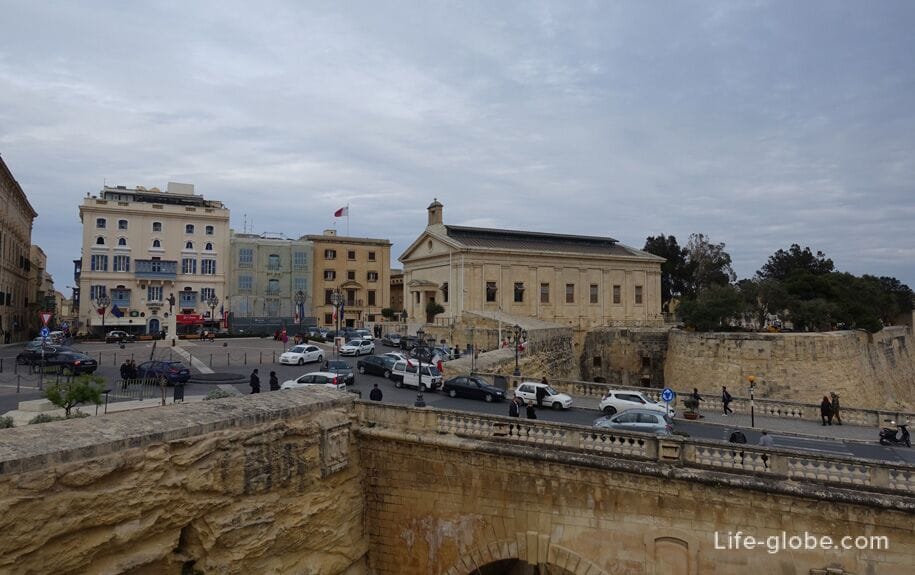
Saint James Cavalier (Maltese name Kavallier ta 'San Ġakbu) cavalier of the 16th century, built by the order of the knights of St. John.
The cavalier - fortification, built in(on) a larger fortification, and which is located higher than the rest of the parts. Usually, the cavalier consists of a raised platform inside the Fort or Bastion, to be able to fire over the main parapet without interfering with his fire. Using cavalier, it is possible to obtain a greater volume of fire, however, this cavalier also makes it an easy target for the besiegers guns.
St James cavalier is a large state-owned artillery platform-tower with a pentagonal plan and occupying the rear portion of the Bastion of St James.
During the Second world war, the building of St James cavalier was used as a bomb shelter, and its upper floor was a grocery store.
In 1990-e years the government of Malta ordered the General plan for the restoration of Valletta and its suburbs. The project included the restoration of St. James cavalier and converting it into a cultural center. The restoration was undertaken by the Maltese architect Richard England.
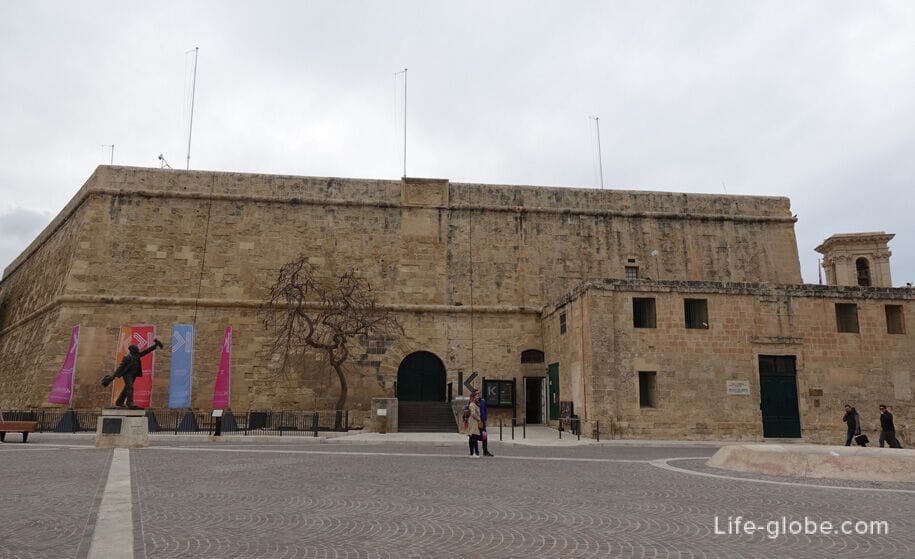
To the right of the cavalier is visible the Dar Annona, post office.
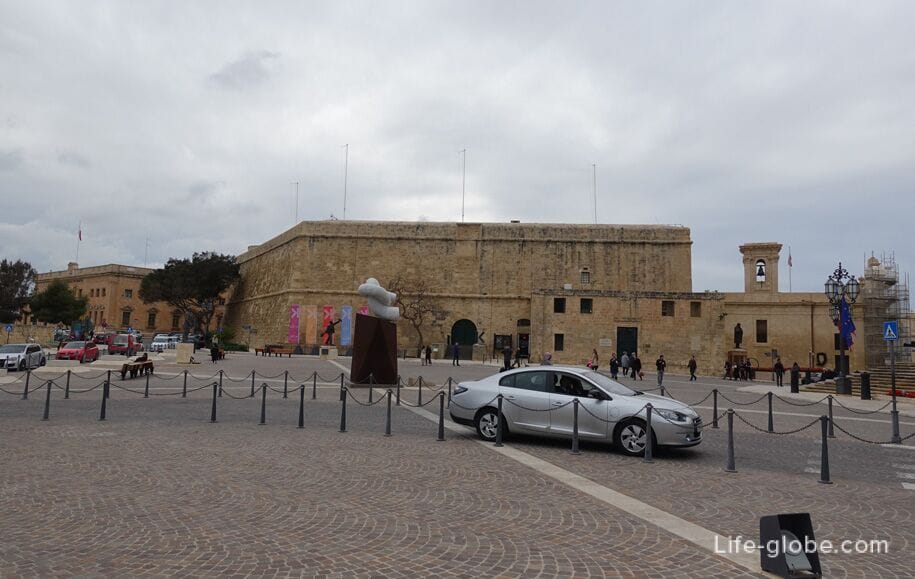
View of the cavalier from South Street (Triq Nofsinhar).
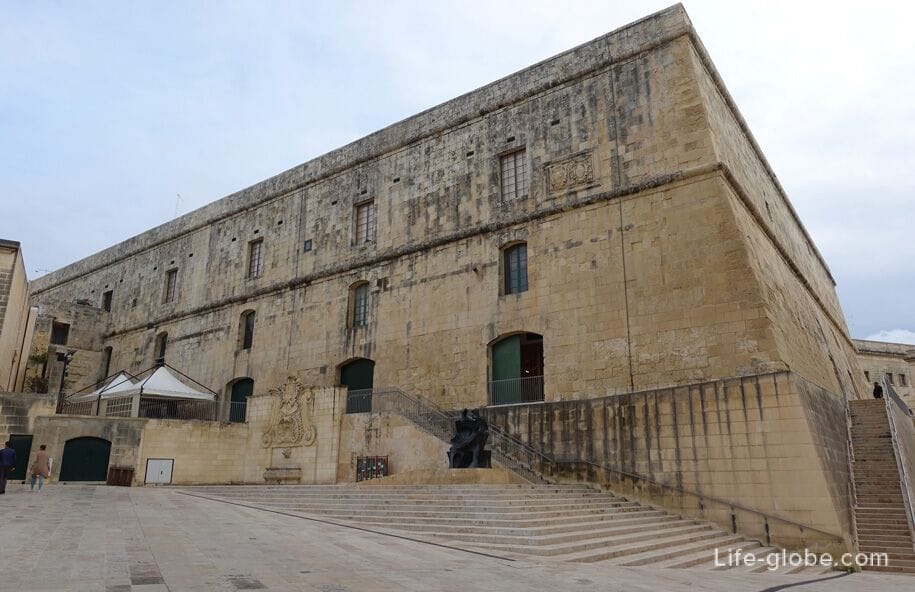
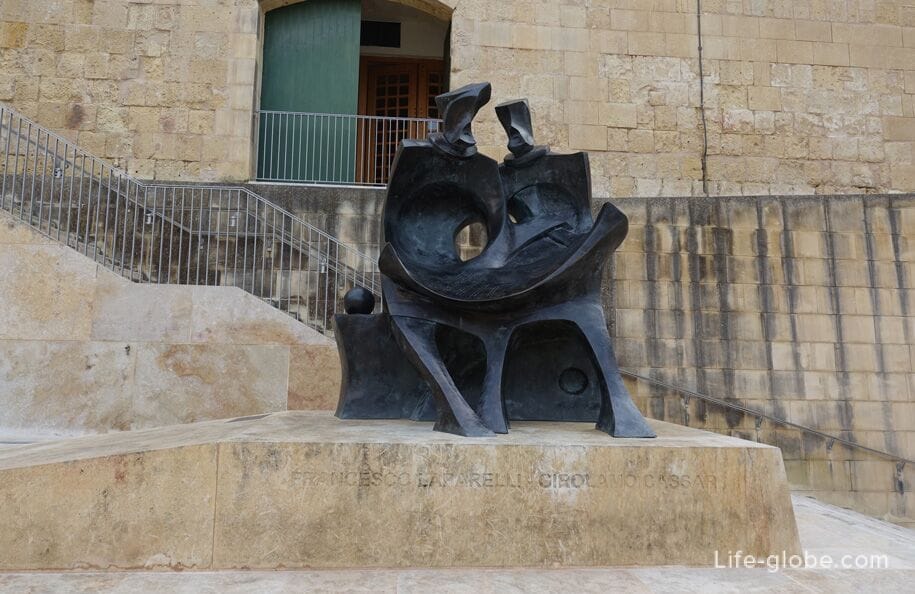

Near St James cavalier, down the street South, is the chapel of the virgin Mary Victorious (Our Lady Of Victories Chapel).
The Church was built to commemorate the victory of the knights of St. John and the Maltese over the Ottoman invaders on 8 September 1565. The church was chosen as the construction of the first building of those times to express gratitude to the saints for their victory. Behind the main altar of the Church is a painting of the Nativity of the virgin Mary.

On the corner, near the Cavaliere and of the Church, is a monument to Maltese statesman, Prime Minister of Malta (1947-1950), Paul Boffa (1890 - 1962).
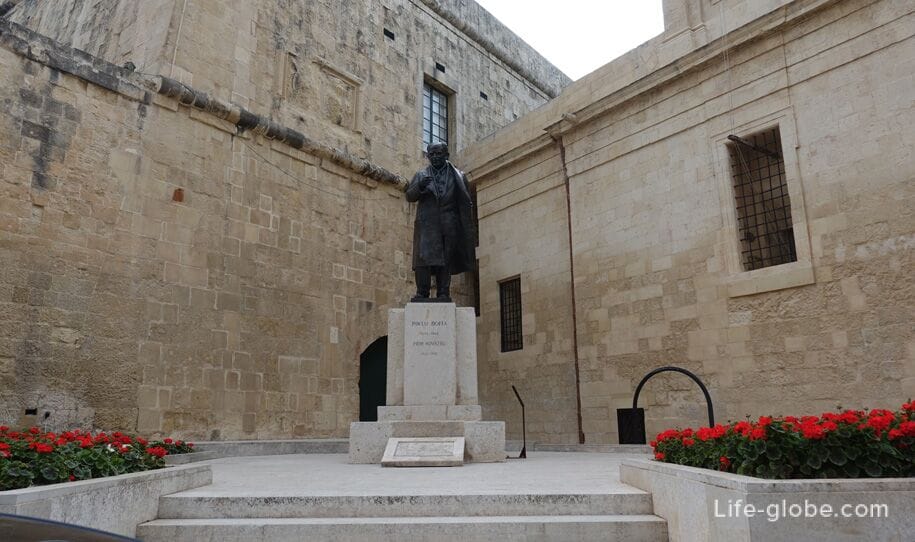
Opposite the Church of the virgin Mary is the Roman Catholic Church of Saint Catherine of Italy (Knisja ta' Santa Katerina), built in 1576 by the Italian knights of the order of St. John.
In the 17th century the Church was expanded in the existing chapel was added to the octagonal Church. The original chapel was turned into the sanctuary of the new Church. The Church has undergone a serious restoration from 2001 to 2011.
Today the Church serves as the parish Church for the Italian community of Malta. Thus, the Shrine is better known as the Church of St Catherine of Italy or Santa Katerina tal-Ital in the Maltese language.
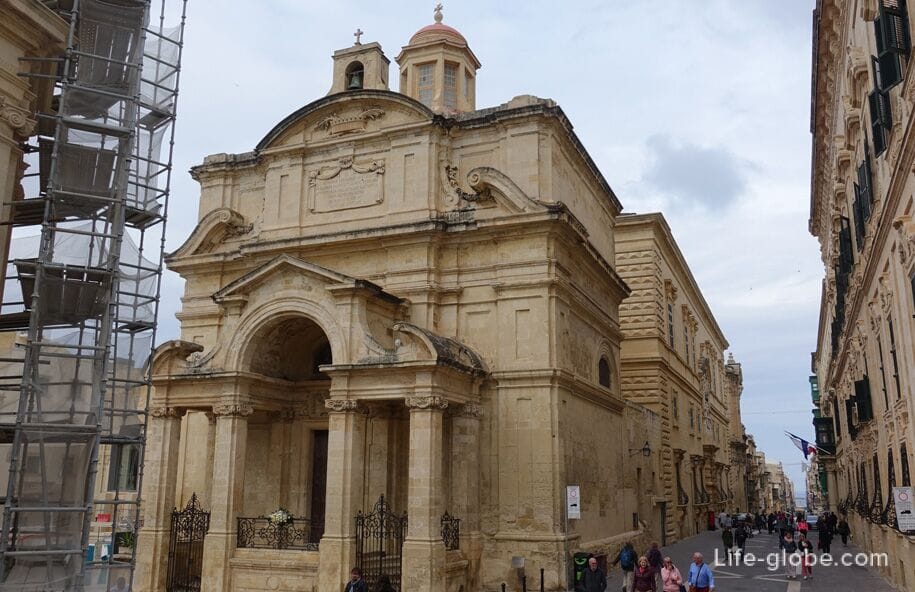
Hotel Castilla (Auberge de Castille) - the main decoration of the square of Castile, immediately apparent.
The original building was built in 1570-ies as the home of the knights of St John. The current building dates back to 1740, when it was completely rebuilt during the magistracy of Manuel Pinto da Fonseca. The new building was built in the Baroque style with a rectangular plan and a Central courtyard. The house was named "Best building in Malta".
Now in the walls of the building is the office of the Prime Minister of Malta.
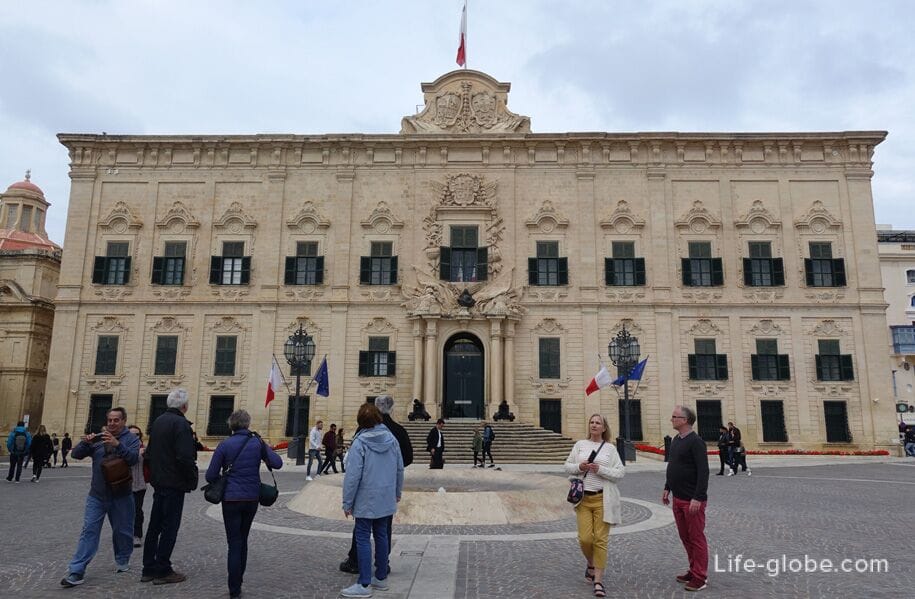

The building of the Malta stock exchange (Borża ta' Malta), originally known as Casino della Borsa, is the stock exchange of Malta.
The exchange was established with the enactment of the Malta stock exchange in 1990 and began trading operations on 8 January 1992.
In 1999, the exchange moved to the building of the former garrison chapel Castille place. This religious building was built in 1857 and was used as a multi-denominational Church until 1950. The former church was then used for entertainment purposes, as a post office and as a naval school, after which it was overhauled under the stock exchange. Since then, the former church is known as the Stock Exchange or Borsa building.
To the left of the stock exchange building - the entrance to the Upper Barrakka Gardens.
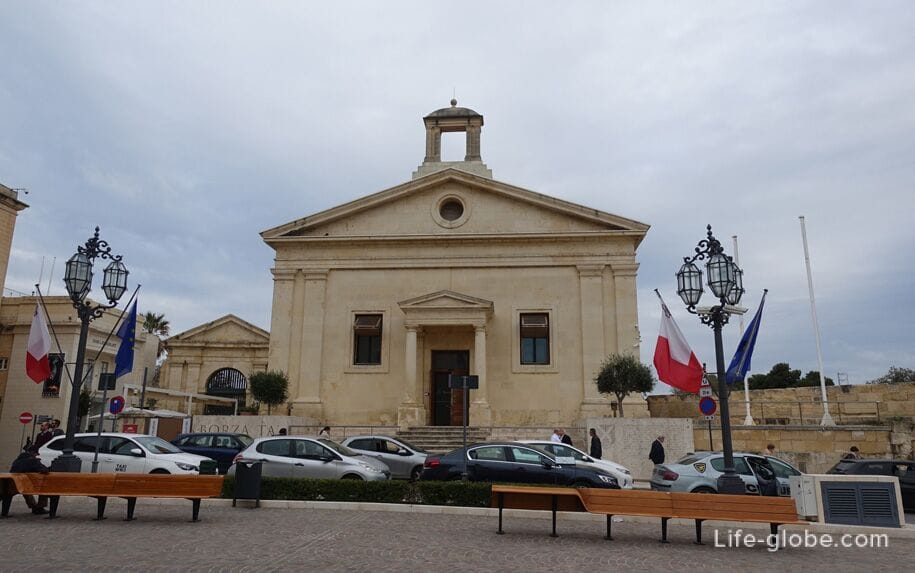
The headquarters of the Central Bank of Malta (Bank Ċentrali ta’ Malta).
Central Bank of Malta was established on 17 April 1968. In may 2004, when Malta joined the European Union, it has become an integral part of the European system of Central banks. In particular, the Bank of Malta was responsible for the issue of banknotes and coins of the Maltese Lira before Malta adopted the Euro in 2008 and the Bank became part of the Eurosystem.
The Bank is located in a building from the early 20th century, the construction of which was completed in 1924 as the Institute of Vernon or the Vernon Club. The Bank occupied the building since 1967, but agreed to lease space only in 1968, with a contract for almost a hundred years. In 1968, the interior of the building was demolished, retaining the neoclassical facade. Since 2004, the building was purchased from the government of Malta by the bank.
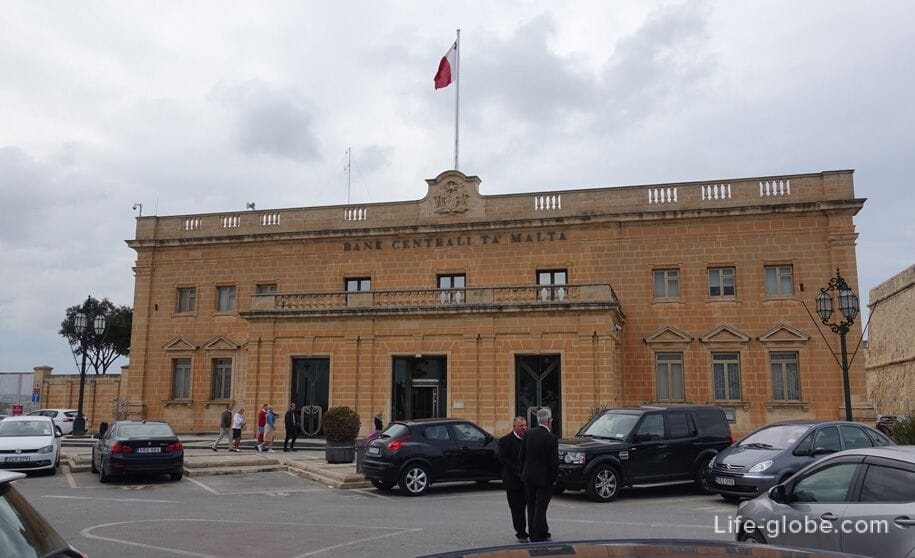
Monuments and sculptures in the square of Castile
Monument "the Flame that never dies" is a tribute to all Maltese who worked passionately to the Maltese people could become the master of your own destiny as a nation and determine their future.
The monument is a artwork of Valerio Schembri. Was installed July 7, 2017.
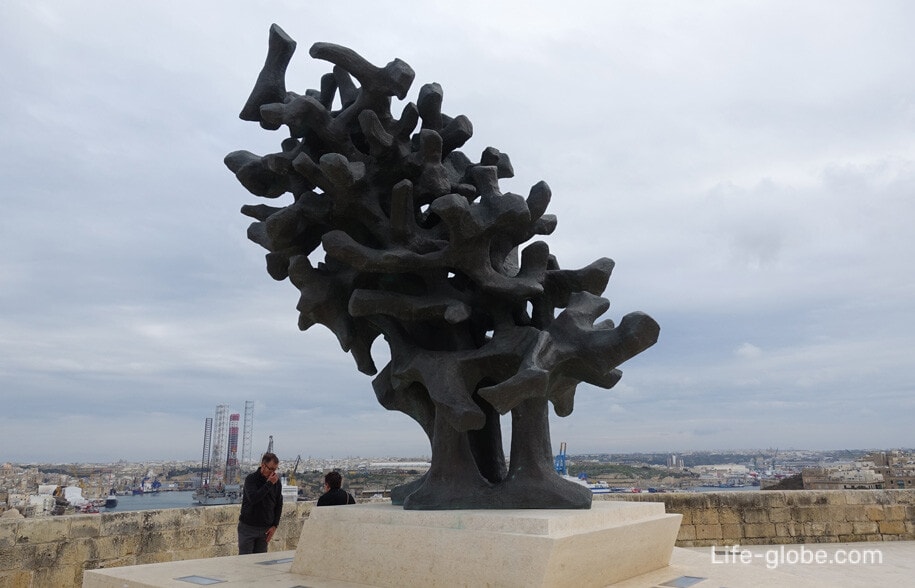
Monument dedicated to the summit on migration, during which leaders from Africa and Europe met in Malta in 2015.
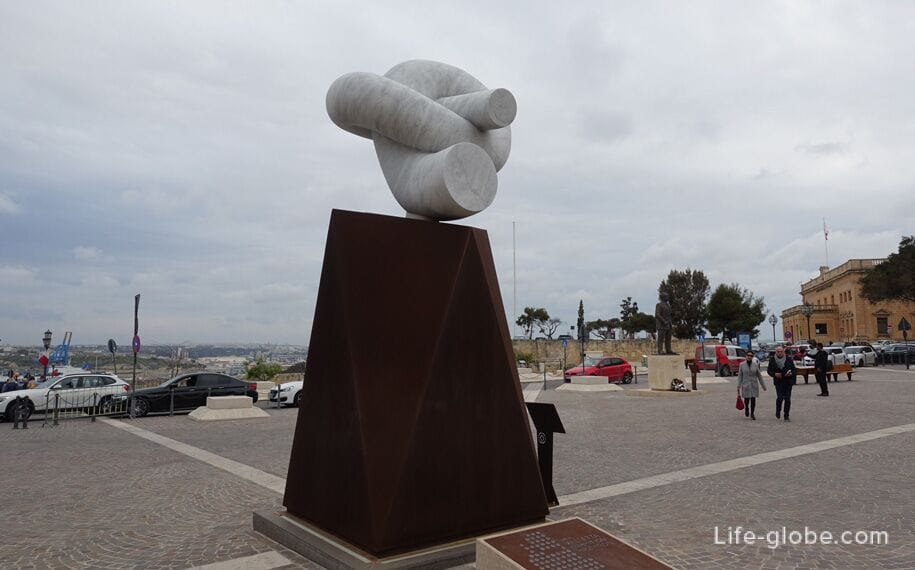
Monuments to the outstanding personalities of Malta, including the Prime Ministers of Malta George Borg Oliver and Dominic Mintoff; Maltese philosopher, writer, journalist and socialist, leader of the national liberation and labor movements, has repeatedly been subjected to persecution (imprisonment, deportation and expulsion from the island) - Manuel EN-Suite.
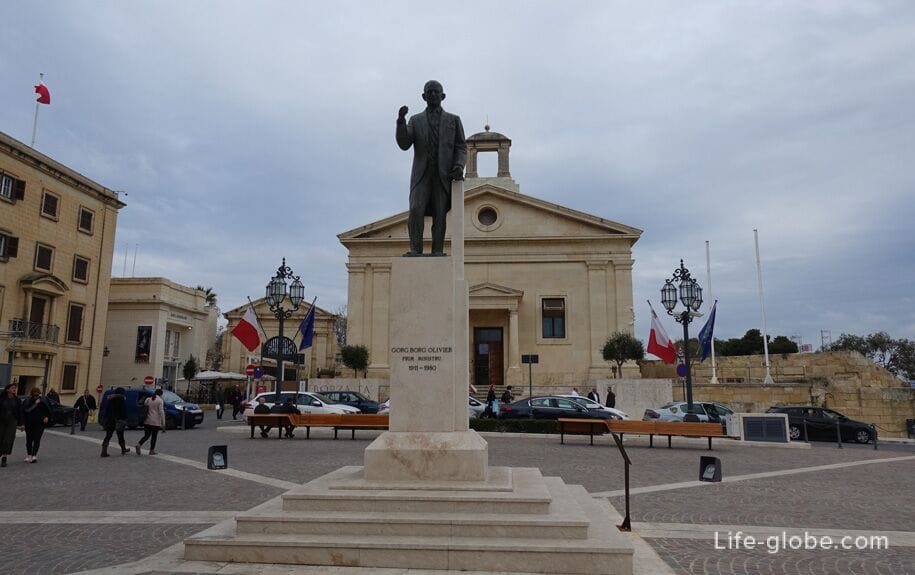


From the former defensive walls of the bastion that border the square, panoramic views of part of the bastion, the moat, the garden, the bank, the Triton fountain, Floriana and part of the Great Harbor of Malta open up.

